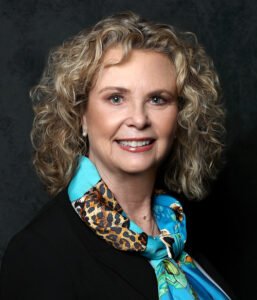Three trends to watch, and how revenue growth is a team goal.
By Margaret McGuckin, CO-Founder & Principle, i3 IGNITE
There is no issue more important to your dental group than increasing top-line revenue. Top-line revenue is the most important thing for you to focus on because it creates value for your business – the kind of value you need for your organization, which is consistent and accelerated growth in revenue.
I am the co-founder and principal of a consulting firm called i3 Ignite, where my business partner Kathy Lynn-Cullotta and I advise businesses that are in growth and scaling mode in a variety of industries. We work with companies who provide services like dentistry and suppliers who are trying to build customers and revenue.
What I’m hoping to accomplish here is to get you to think differently about your business, and more specifically to think about what you could do differently in your organization to impact revenue growth. I want you to walk into your office and have a better understanding of how you can generate and leverage top-line revenue growth that will yield the results you need for your organization.
Three trends impacting the future of revenue growth
I believe there are three trends that are impacting the future of revenue growth. For group practices and DSOs, those trends are consumerism, competition and technology.
When I was at ClearChoice Dental Implant Centers seven years ago, we were pioneers in direct consumer dentistry. Consumerism was this tiny trickle that we were trying to tap into, but now consumerism is practically a tsunami. It’s here, in a huge way.
Even specialty practices are not immune to consumerism. There are specialty practices who have traditionally relied on referrals for their revenue growth, that are finding that their revenue growth dollars year over year are coming from their direct consumer efforts.
Five years ago, were there nearly as many strong DSOs and large group practices as there are now? The competition was very different from what it is today. There are very strong brands out there today that are all actively competing against each other, and the competition is growing every day. I guarantee you that there is more in the wings, ready to join the fray. We are not done with new start-up DSOs.
Technology is a tremendous gift for modern DSOs and large group practices. The right technology can increase the quality of care that you provide, while decreasing your overhead costs. Additionally, it can continue to raise the engagement you have with both consumers who are not yet your patients and your current patients. Technology acts as a sort of silent business partner – the best pieces of technology aren’t attention grabbing, but they do incredible things to move your business forward.
The revenue equation is something that most of us are probably familiar with. You need to interest people in your practice, get them to contact you, convert them to be your patient, and retain them over time. This creates revenue for your practice. While this might have been easy at one point, those three trends are making it more difficult every day to operationalize increases in revenue. It’s only going to get more difficult as we move into the future.
| Higher value procedures Another strategy to generate and leverage top-line revenue growth is to think through your higher value procedures strategy. Here are three easy steps: No. 1: Categorize what a high value procedure is in the practice. Develop the criteria for what a high value procedure is. Over $1,000? Over $5,000? Over $20,000? No. 2: Using data, identify where the strengths and weaknesses are today. What percent of procedures fall into the high value category? If you’re a referrals-based practice, who are your best sources of high value cases? If direct to consumer, what sources/leads are most qualified? What’s the conversion rate on these cases vs. all other cases? Who’s the best at converting high value cases? Exactly what are they saying and doing? What can others in the practice learn from them? No. 3: Create your Opportunity Statement. An example of an Opportunity Statement: “How can we increase our high value procedures by X% in the next Y months?” Develop the Opportunity Statement as a team. Then, create a very simple action plan: who’s going to do what, by when, etc. And, hold each other accountable. |
How to continue generating revenue
Part of the challenge that business leaders have in generating revenue for their organizations is not understanding your market. Who is your target audience and how can you better serve their needs? This is especially important for dental practices, because your target demographic can change from practice to practice based on where you are located and what specific services you provide.
When you have a really sharp focus on who you are targeting, you’ll have a better chance of reaching them through all the noise of the competition. You need to know what your target market is looking for, and you should have an intimate understanding of what makes your practice unique.
Another thing that emerging practices really need is to focus on keeping the virtuous cycle going. The virtuous cycle starts with a single occurrence, like a happy patient. That occurrence causes something else, and each positive occurrence will start an upward spiral, continuously improving your business.
One of the most important things for emerging practices and DSOs to understand is that sales is not a dirty word. It doesn’t mean that you are presenting treatment plans that are either unnecessary or not right for that patient or condition. What I’m referring to is the consultive selling approach that uses the patient’s needs to really drive the conversation.
It’s everyone’s job to provide revenue for the practice: the front desk, the doctors, dental assistants, treatment coordinator, and patient education consultants. When everyone works together towards a common goal (i.e. generating revenue), everyone is responsible for the success of your practice. If your team isn’t using daily huddles to brief one another about sales and revenue opportunities for the day, then you are not using your huddle time effectively.
Margaret McGuckin is an expert in growth – whether it’s turning around a situation to get back on the growth track or scaling quickly. Her passion is getting results in a way that’s sustainable, which she’s done successfully as a C-level exec in both Fortune 100 companies and startups.






